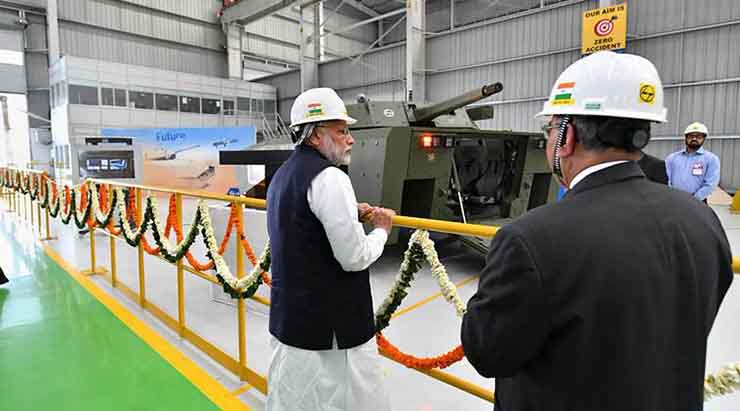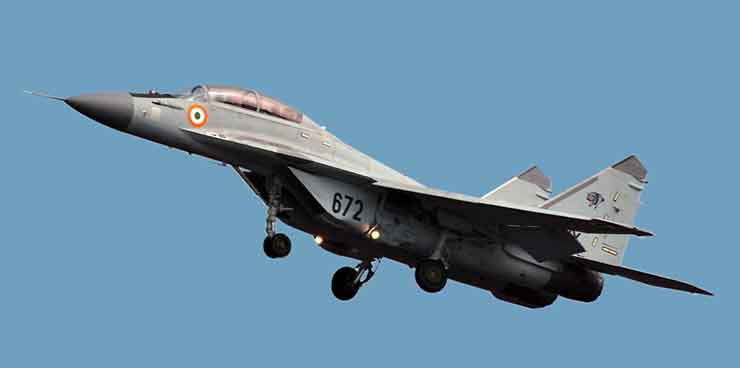
Aspiring India is under tremendous pressure for sure. And so is the state of decision making by the Indian military planners, policy makers and strategists. It seems that while planning, their abundance knowledge being not in order often leads to a situation where the action taken contradicts the actual plan objective and its desired goal.
Indian defence procurement policy despite its many avatar (incarnation) has yet again fallen victim to its fanciful planning that had visualised India achieving self-reliance or Atmanirbharta in quick time.
On the move with much hype and optic zeal since 2014, the policy planners somewhere couldn’t realise that the procurement policy they adhered to had embedded series of unanswered queries – what if, what might or what could have and what never will or what actually is achievable in various stages.
Recently, the government gave its nod to procure 21 MiG-29 fighter jets and 12 Sukhoi MKIs from Russia and fresh order for SIG assault rifles from United States. The government is also planning to enhance its surveillance capabilities and firepower by placing orders for Heron surveillance drones and Spike anti-tank guided missiles from Israel under the emergency financial powers granted by the government.
Additionally, Defence Acquisition Council (DAC) has empowered the armed forces to go ahead with Rs 300 crore worth of capital acquisitions to meet emergent operational requirements that include high-altitude clothing, armour-piercing fin-stabilised discarding sabot (APFSDS) ammunition fired by the T-72 and T-90 main battle tanks, loitering munition, Spice bombs, Man Portable Air Defence System (MANPADS) and lightweight tanks.

These key developments are as a result of long and continuing military standoff with China. Though India finds itself trapped with worsening security situation, the resolve to come to grips with critical problems and solve them is missing. In the absence of a thoughtful national security policy and hollow learnings from its repeated mistakes in the past, unplanned and rushed military spending in emergency situation continues unabated.
In particular, the order for SIG assault rifle has not only shaken the domestic small arms industry but also is the very essence of Atmanirbhar Bharat or self-reliant India under duress. The series of setbacks (government to government deals for AK-203, off the shelf buying and disparity in testing criteria) for the domestic small arms industry is a matter of great concern considering the fact that a number of companies have already made investment in setting up manufacturing facilities.
They have come up with their own rifles and other systems (indigenously designed) or through tie up/joint venture with foreign companies. The biggest pain being that while they have world class rifles on offer, it has to go through multiple stringent tests –summer and winter trials, high altitude and desert trials. On the contrary, foreign manufacturers have to show their products’ performance in-house at their manufacturing facilities as it is being procured under emergency provision through fast track procurement (FTP) route.
The concerns of Indian small arms industry are reasonable as to keep them afloat and contribute towards self-reliance in defence, orders are imperative. Many agree that the penchant for imported rifles is creating hurdles and making them feel like a surrogate child awaiting legitimacy for long. The government needs to look into their concerns with urgency and initiate remedial measures to help the industry thrive and be competitive globally.
India has a glorious past as far as small arms and ammunition is concerned. After the setback of 1962, working closely with defence research laboratories and in-house reverse engineering, Ordnance Factory (OF) engineers came up with semi-automatic rifle, indigenous field and mountain gun by 1965 and indigenous munitions were the mainstay of armed forces in 1971 and later were exported to Africa with proven efficacy as aid to the on-going liberation struggles in the continent.

After 1980s, India lost its path somewhere and the inability of OFs to sustain to their excellence in the long run derailed the self-reliance path the country had undertaken. Similarly, Defence Research and Development Organisation (DRDO) too have not been able to deliver to the expectations.
According to a recent ANI news report, the DRDO has developed the P7 Heavy Drop System, which is capable of para dropping military stores up to 7-tonne weight class from IL-76 aircraft. The irony is that it took more than two decades to fructify and that too when IL-76 aircraft are in the last leg.
This aptly illustrates how the DRDO’s culture of red tape and delayed implementation result in waste of time, talent and money! DRDO needs to reorient itself and focus more on core defence technology matters and be more accountable.
Thus it is clearly evident that in the last seven decades, India has faltered due to varying factors (bureaucratic red tape, complacent work environment in silos, trader’s mentality, unwillingness to collaborate, reluctance to take accountability and trust deficit) and drifted far away from its self-reliant economic development it started pursuing immediately after attaining Independence.
The term ‘self-reliance’ is nothing new, it has its roots in India’s freedom struggle and was very much embedded (though invisible) in the planned development idea (remember first three five year plans). Later on, it got transformed into a fragile self of its evolving self as an idea restricted narrowly to import substitution. It’s another story that despite recognising the strategic importance of self-reliance, India couldn’t make self-reliance evolve further in sync with its own development and the changing global context.

Prime Minister Narendra Modi’s Atmanirbhar Bharat is nothing but another re-defined variant of self-reliance with an aim to take on the emerging challenges India will have to deal with in the post Covid global order. For India, the real meaning of self-reliance is ingrained in cooperation and peace of the world along with a secured and strong India. Thus, having self-reliance in defence production is of prime importance and a must for the country.
After all, what has stopped India to become self-reliant in defence equipment production? Is it due to its failure to come up with a well-defined and visionary national security policy apart from the other policy initiatives undertaken? Perhaps it is.
India has somewhat mistakenly positioned its foreign policy strategy with an assertive understanding that development will eventually take care of security. In the past, it may have worked out well but in the current global context it is off colour, impractical and demands a rethink with fresh insights.
Prof Rajesh Rajagoplan recently wrote, “Security policy cannot be based on the hope or plans of long term economic development. Such thinking is based on the potentially fatal assumption that the country will face no unmanageable security challenges in the decades that it will take to become wealthy and strong. Unless there are other means of keeping security threats at bay in the meantime, or unless a country is extremely fortunate, this is a highly risky strategy.” The experience of 1962 emphatically proves that relying on development to take care of security aspects was quite expensive for India as it diminished its global role and took another three decades to regain it.

A sluggish attempt has been made to come out with a national security policy. But, India has to realise that it has to move fast considering the fact that paying inadequate attention to security till date has been detrimental to its economic development efforts. In reality, national prosperity will come through only when the wheels of economic development and security policy starts moving forward in tandem.
The current state of affairs may have put India into a complex situation but it knows how to handle the situation deftly. It will definitely understand the strength of irony and will carve out its new pathway to achieve Atmanirbharta. The real action from India demands prioritised rolling out a robust national security policy along with focused efforts towards innovation and R&D, handholding of private defence industry and ramping up defence manufacturing through public-private partnership (PPP).








